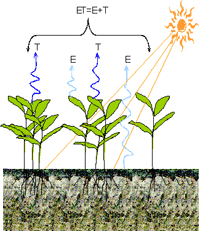Agricultural Research Division of IANR

West Central Research and Extension Center, North Platte
Date of this Version
2008
Citation
Transactions of the ASABE, Vol. 51(5): 1585-1590.
Abstract
The Wind Erosion Prediction System (WEPS) is a computer model for the simulation of windblown sediment loss from a field. The model is used to evaluate the effect of alternative cropping systems and management scenarios on wind erosion. WEPS requires hourly wind data, which for many locations are unavailable. Therefore, the objective of our research was to investigate whether wind speed and direction can be simulated adequately from temporally limited data and to determine suitable times of the day to take measurements if only a few measurements per day can be made. For three locations (La Junta, Colorado; Sidney, Nebraska; and Pendleton, Oregon), two statistical datasets were created to be used with the WEPS stochastic wind generator. The first was based on the full dataset with 24 hourly observations per day, and the second was based on a subset of four observations per day: at 0200, 0800, 1400, and 2000 hours local standard time (LT). Erosive wind power densities (WPD), calculated from both datasets, agreed well with each other. On an annual basis, the discrepancy was greatest for La Junta, with a difference of 0.8 W m-2 (6%). For the five most erosive months, the mean absolute WPD difference was less than 10% for all three locations. Prevailing wind erosion direction and WEPS‐simulated soil loss also showed good agreement between the two data sets. Many other subsets of two, three, and four measurements per day performed as well or better than the 0200, 0800, 1400, 2000 LT subset. In spite of temporally limited wind data, it is possible to use WEPS to estimate wind erosion risks and the effectiveness of various conservation practices. The results of this study allow researchers to evaluate whether limited data, measured at certain times of the day, are suitable for use in WEPS. For a new station, if only a few measurements per day are going to be made, the results of this study may be used as a guide to choose the times of the day to take these measurements.


Comments
Copyright 2008 American Society of Agricultural and Biological Engineers. Used by permission.